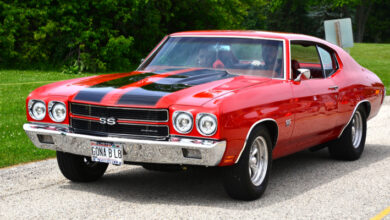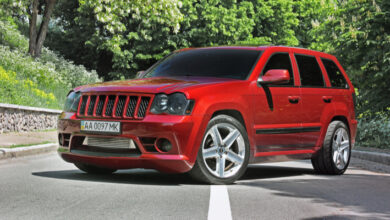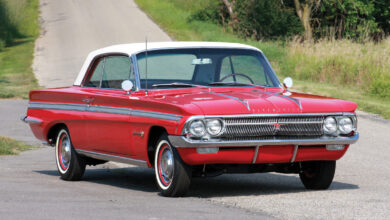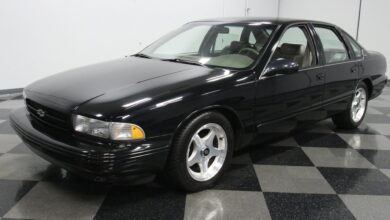El Camino – The One Size Fits All 2-Door Pickup Coupe
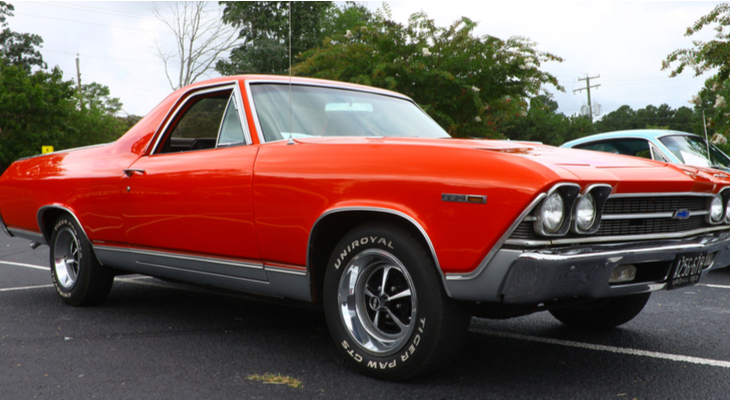
Combining the best of both worlds, the El Camino offers a utility pickup in the form of a coupe. Although some may wonder where Chevy got the idea to combine open air experiences with a pickup, it had actually happened before. In the 1920s, roadster utility models offered an open top roadster with a rear cargo bed.
In 1932, Ford Australia was the first to develop a utility coupe after receiving a letter from the wife of an Australian farmer. She wanted a vehicle she could drive to church, but also use to take her four pigs to the market. Many American companies continued toying with the idea of a pickup utility coupe into the late 1930s, until the trend faded off.
Eventually Ford introduced the full-sized Ranchero for the 1957 model year. In 1959, Chevy responded with the El Camino. 1959 was the only year those two models would compete directly under the same full-size vehicle classification.
The El Camino came out with a bang. By outselling the Ranchero 22,000 to 14,000, Chevy struck gold. By 1959, the El Camino craze already seemed to fade, with only 14,163 total El Caminos produced.
To some, the Chevy El Camino is all business up front with a party out back. A vehicle offering the cargo versatility of a pickup truck in a car-sized package is a practical idea to many enthusiasts. The El Camino enjoyed five generations of production before chopping the mullet off.
- First Generation – 1959-1960
- Second Generation – 1964-1967
- Third Generation – 1968-1972
- Fourth Generation – 1973-1977
- Fifth Generation – 1978-1987
Chevy eventually discontinued the El Camino, due to a lack of public interest. At a time when many consumers were starting families, the El Camino offered limited seating capacity. When it comes to cargo volume, the El Camino falls short compared to trucks from the same era.
Although there are many creative engine swaps available in the El Camino market, the factory options are respectable. Those seeking an all original first-generation El Camino usually prefer the 5.7L V8.
Chevrolet has a history of offering many different engine options with their cars and trucks. That tradition certainly continued for every generation of the El Camino. Some generations had as many as six engine options available from the factory.
Key differences between El Camino generations begin with styling and design. Many mechanical advancements evolved as they became available as well.
Based off the Chevelle platform, the El Camino came back in 1964. With over 120,000 El Caminos produced from 1964-1967, it appeared America was happy to have the utility vehicle available again. As the Chevelle received style changes in 1965 and 1967, so did the El Camino.
Consumers were also excited to have a big-block engine available from the factory in 1966. This 396 cubic inch 6.5L V8 produced 375 horsepower. The more powerful engine allowed the 1966-1969 El Camino to run a ¼ mile time in the mid-to-high 14s.
The third generation El Camino, also based upon the Chevelle station wagon/four-door design, introduced a longer wheelbase. Now, customers could purchase a Super Sport (SS) edition of the El Camino, with the 396 big-block installed. In 1970, the SS396 was actually 402 cubic inches, although all emblems and badges still read 396.
Another big-block, the LS6 454 cubic inch 7.4 liter V8, became available in 1970. This was Chevy’s largest and most powerful engine at the time, although not many opted for it. As far as power and performance goes, the 1970 Chevrolet El Camino SS is king.
With 450 horsepower, the ‘70 El Camino SS is the most desirable version among muscle car enthusiasts. In hindsight, it is a shame more consumers did not choose the 454 V8 in the 1970 El Camino. Upcoming regulations limited performance potential in subsequent years.
In 1971, lower octane fuel mandates led to a large reduction in power and performance. The powerful LS6 engine was gone with the RPO LS5 454 replacing it. This engine had 365 horsepower, a drastic reduction from the previous year.
Although they are not as desirable from a collector’s perspective, fourth and fifth generation El Caminos still have plenty of fans. Sure, they are not as powerful, but they are still quite practical. Many of these El Caminos are available with innovative modifications.
There are plenty of all-original and restoration-modified El Caminos available from every generation these days. Values vary based on condition, as well as other factors. On the lower end of the spectrum, project El Caminos are very affordable if you want to start from the ground up.
If you want to keep your elbows clean, El Caminos are available needing little to no work at all, for the right price. El Camino prices range from around $10,000 all the way up to six figures for pristine or customized examples. Deciding which generation you prefer is usually the first step to narrowing down your search.
Even though market demand decreased over its lifespan, El Camino fans and enthusiasts still dream about GM bringing it back. Many unverified reports and an occasional internet hoax spread false hopes. Nothing official appears to be in the works.
Perhaps that is one of the reasons collectors seek the El Camino to this day. There always seems to be little to no chance of Chevrolet deciding to resurrect the El Camino. Yet, enthusiasts all over the world keep the El Camino legacy alive by maintaining the classics.
The El Camino is such a unique design, the world may never see something quite like it again. Despite losing interest from consumers over time, Chevy’s El Camino still lives on. Perhaps, in some ways, this distinctive pickup coupe was far ahead of its time.
Many consumers are now flocking to smaller, crossover SUV designs. This leads many to wonder if there may not be room for a compact pickup-car in the market. The good news is they can still find a vintage El Camino, pretty much anywhere.
You do not have to grow a mullet to drive a classic El Camino, just enjoy the nostalgic experience. If you happen to throw a few things in back along the way, so be it. That’s the way of the El Camino.
